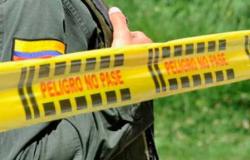Almost 10 months after enduring a painful and long displacement, around 8,000 families returned to their homes in the municipalities of Samaniego and Santacruz de Guachavés, in western Nariño.
He pointed out that as indigenous communities they have always asked the National Government that they want to live in peace, while thanking the government of Nariño, the Victims Unit and the mayor of Samaniego because they made their return to the villages possible.
(Also read: Fighting between dissidents and the Army in Cauca: a community member is seriously injured and 2,000 inhabitants confined).
That August 3, 2023, is still fresh in his memory, when nearly 7,800 inhabitants had to be displaced from the mountainous areas of Samaniego and Santacruz de Guachavés, due to the strong clashes between the National Liberation Army (ELN) and the dissidents. of the FARC.
For Mauricio Pantoja, governor of the La Montaña indigenous reservation, he was less optimistic about the momentous process they carried out when he declared that “here practically the community took the initiative of the return plan, but at this moment we do not have assigned resources, we have to do a diagnosis”.
(Also read: There are 2,075 women in the Valley, victims of sexual violence by armed groups in the conflict).
He emphasized that as indigenous communities they are nature lovers. “Therefore we want to continue conserving it and continue in our territory, but we recognize that there are needs and that resources must be invested to be able to restore all the losses that occurred during the armed conflict,” she said.
He said that the indigenous communities settled in their reservation have every will to move forward, as well as continue believing that peace is possible, “we are completely determined to support this process.”
According to the revelation of Alex González, undersecretary of Peace and Human Rights of the governorate of Nariño, The return of indigenous communities to their territories means great progress towards peace.
“We want this return of the community to be within the framework of the Constitution and the law, which can be with guarantees that involve a social investment that the National and Departmental Governments have been managing,” he said. He then added that resources will be invested in tertiary pathways, education and health in the region.
(Read also: Overcrowding in Cali police stations: this is how detainees live among violence and diseases).
The indigenous leaders also insisted on the need to promote humanitarian demining actions in the territory, following the progress of negotiations between the National Government and illegal armed groups.
MAURICIO DE LA ROSA
SPECIAL FOR THE WEATHER
GRASS






